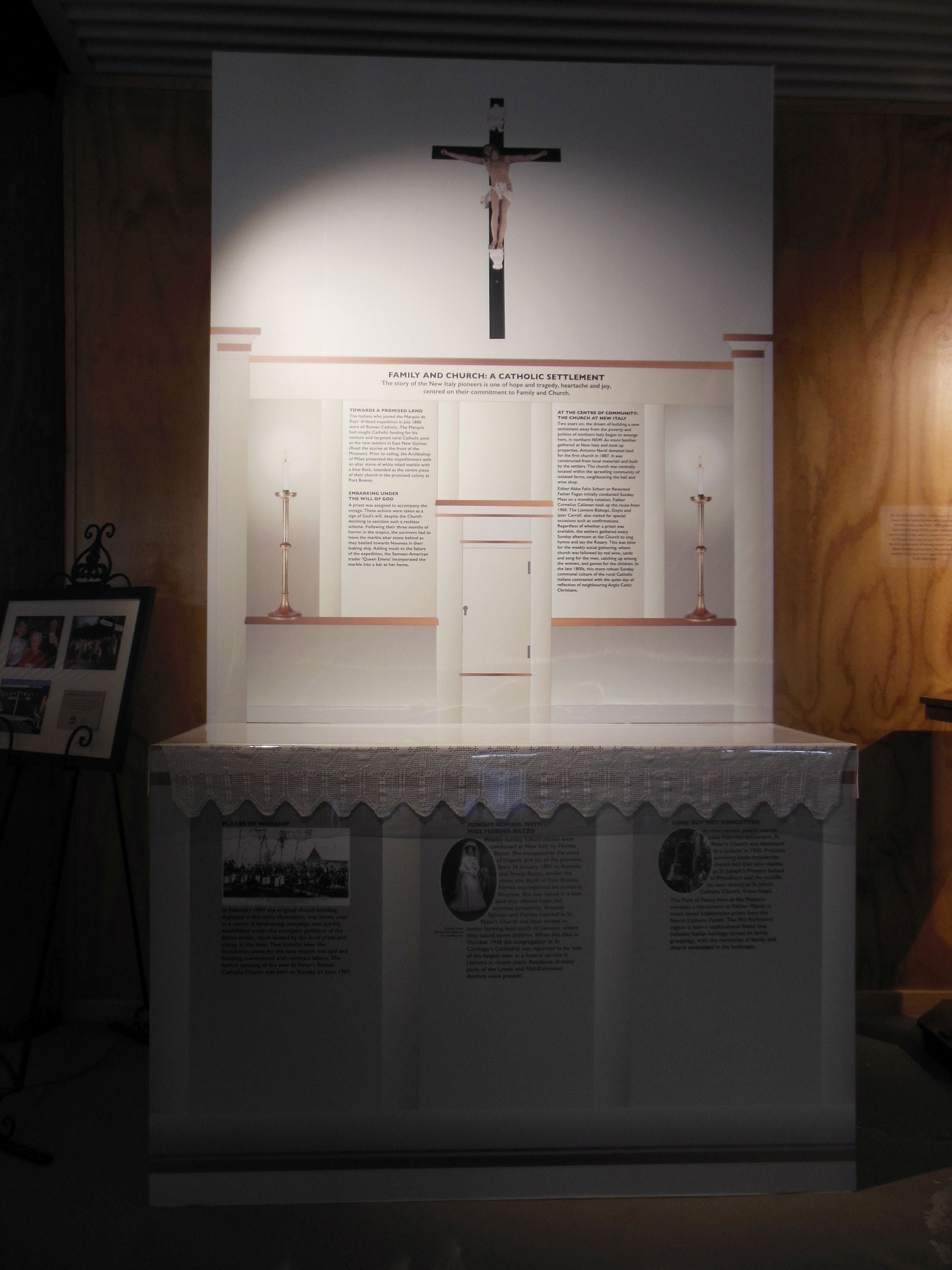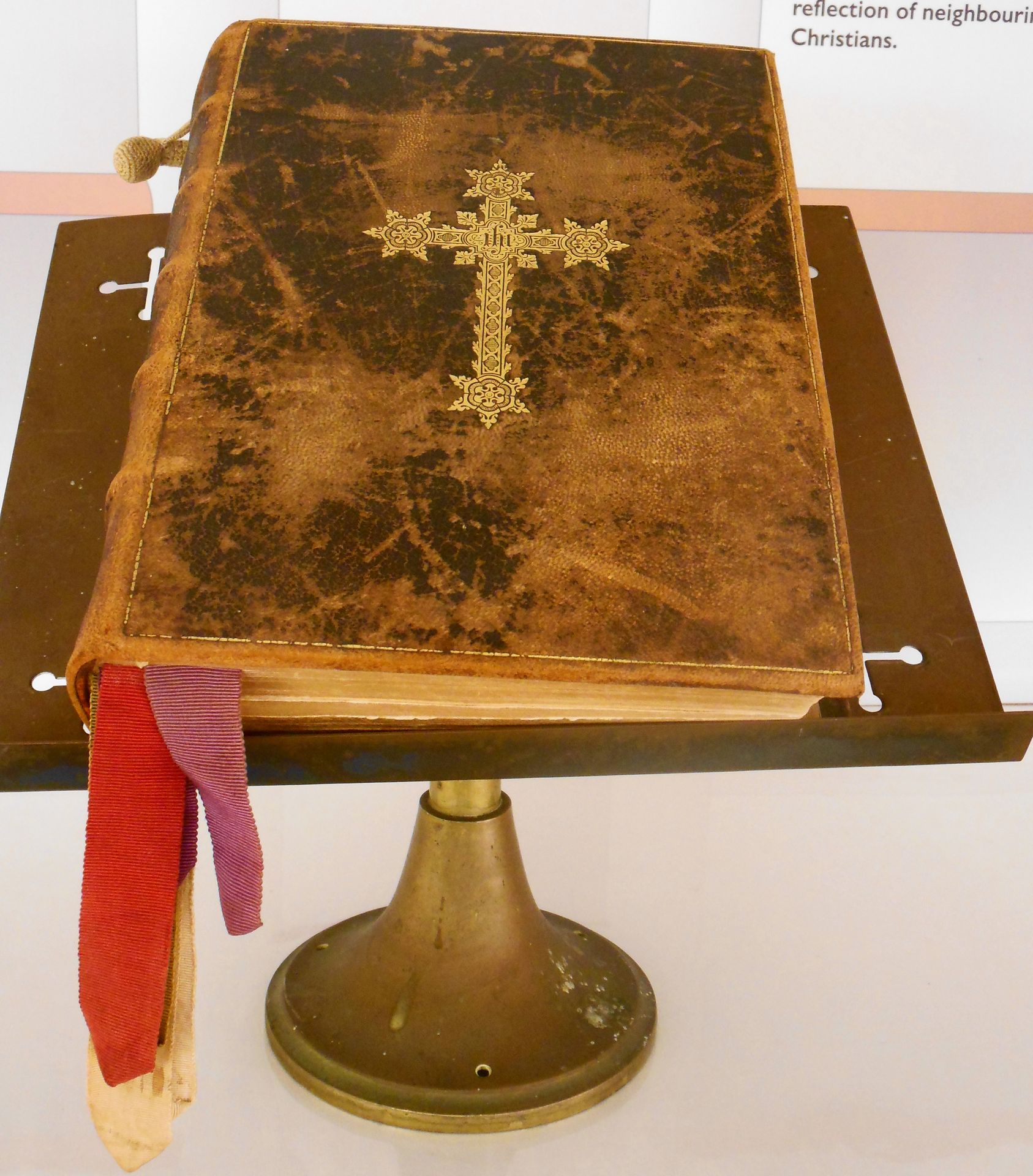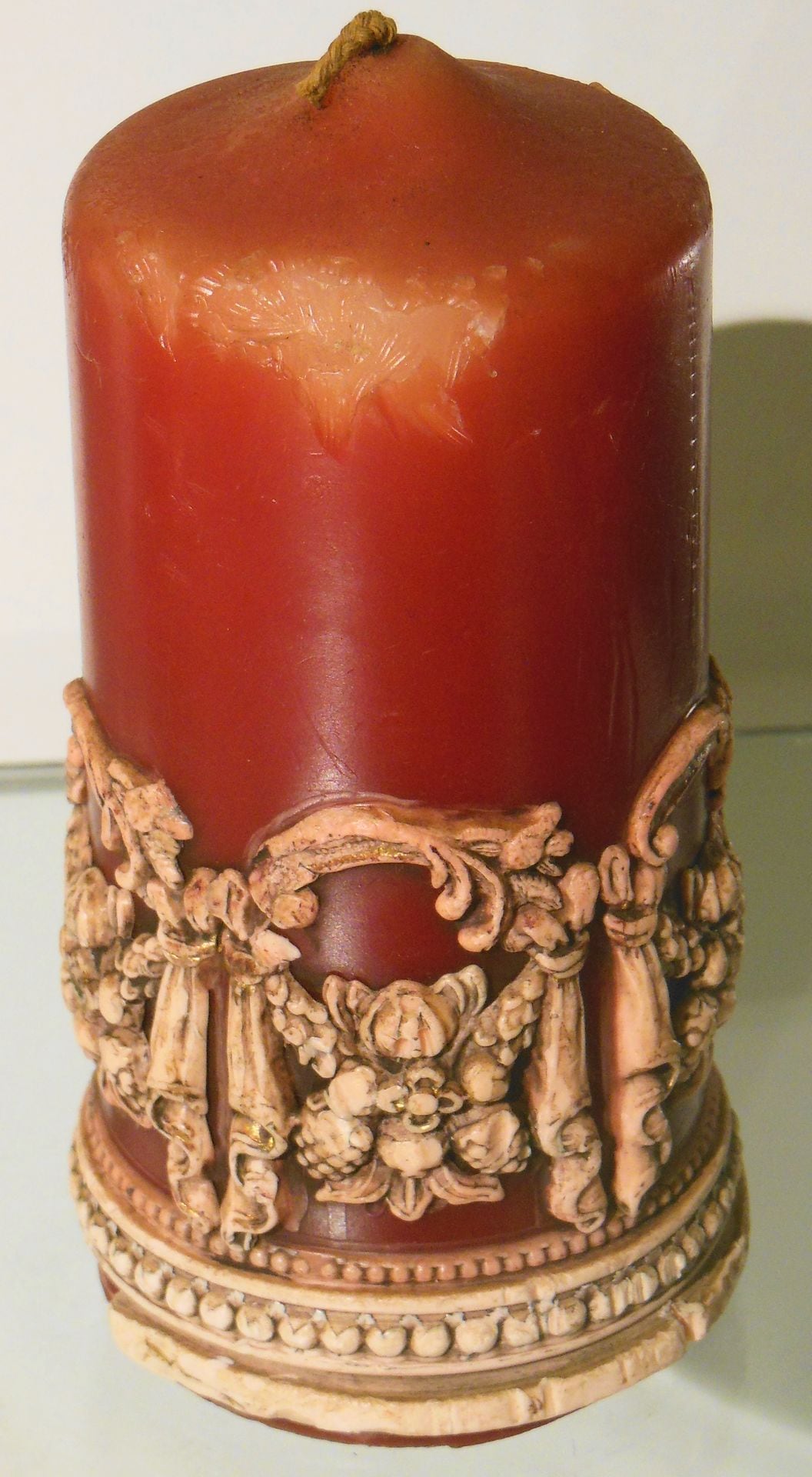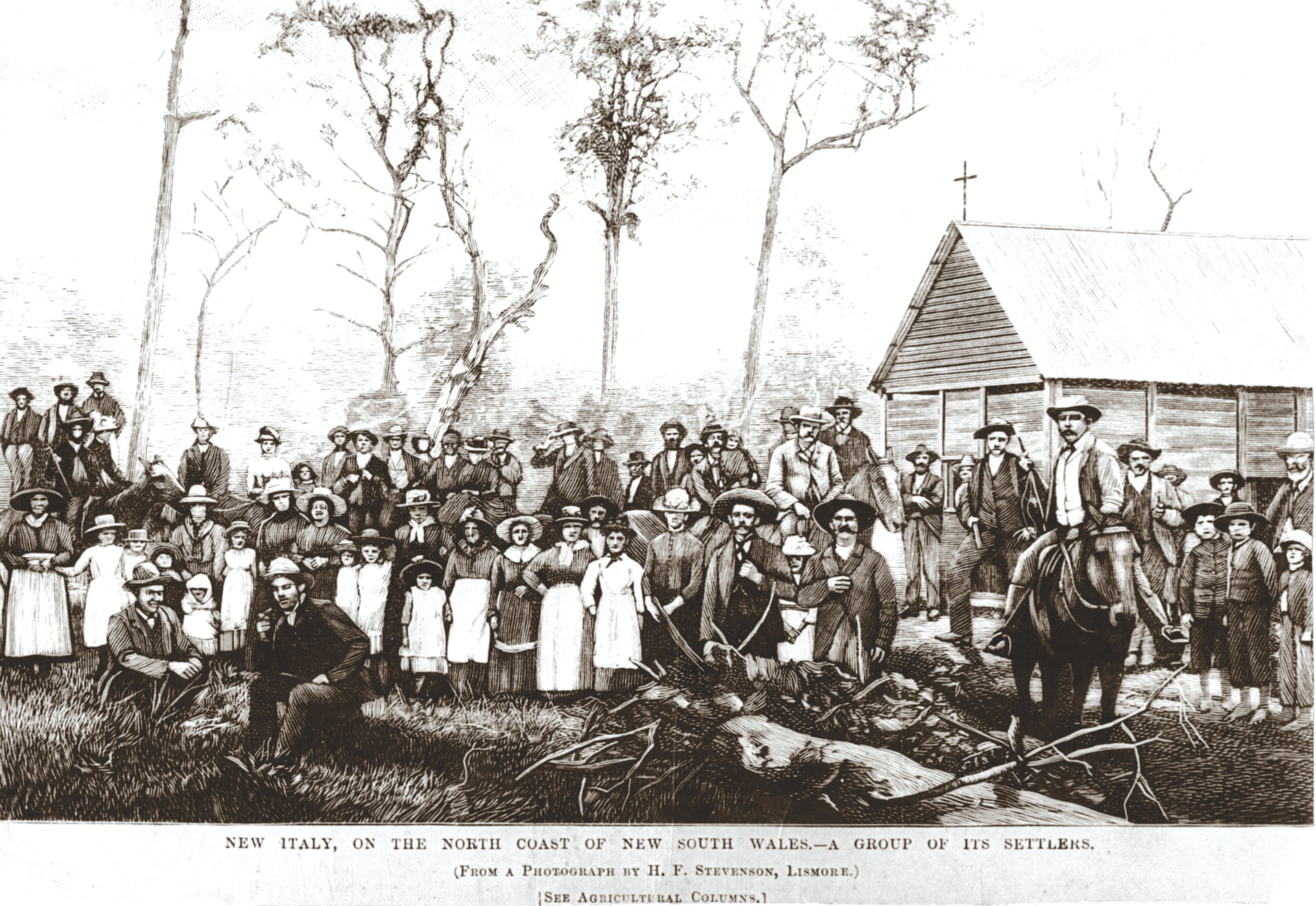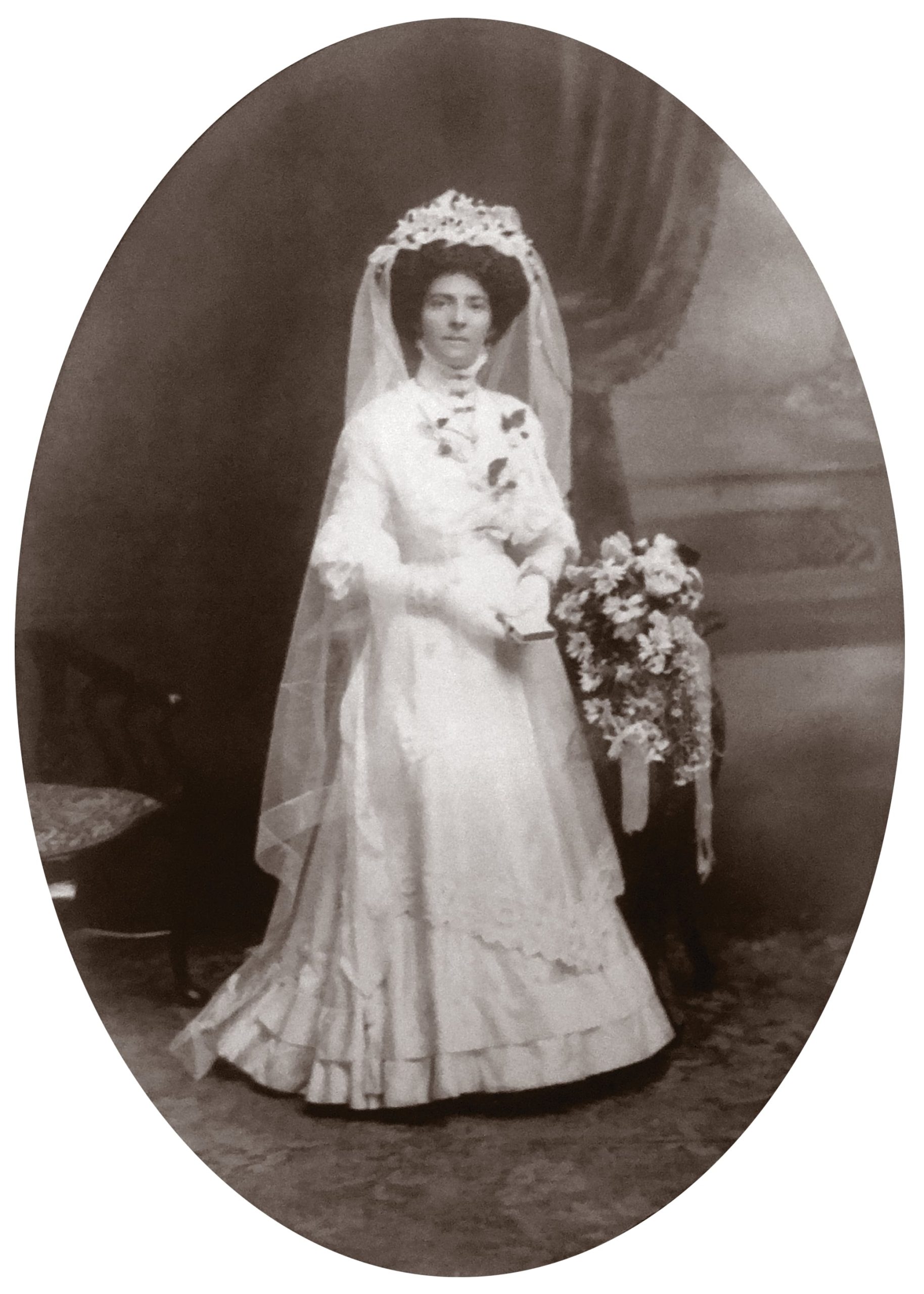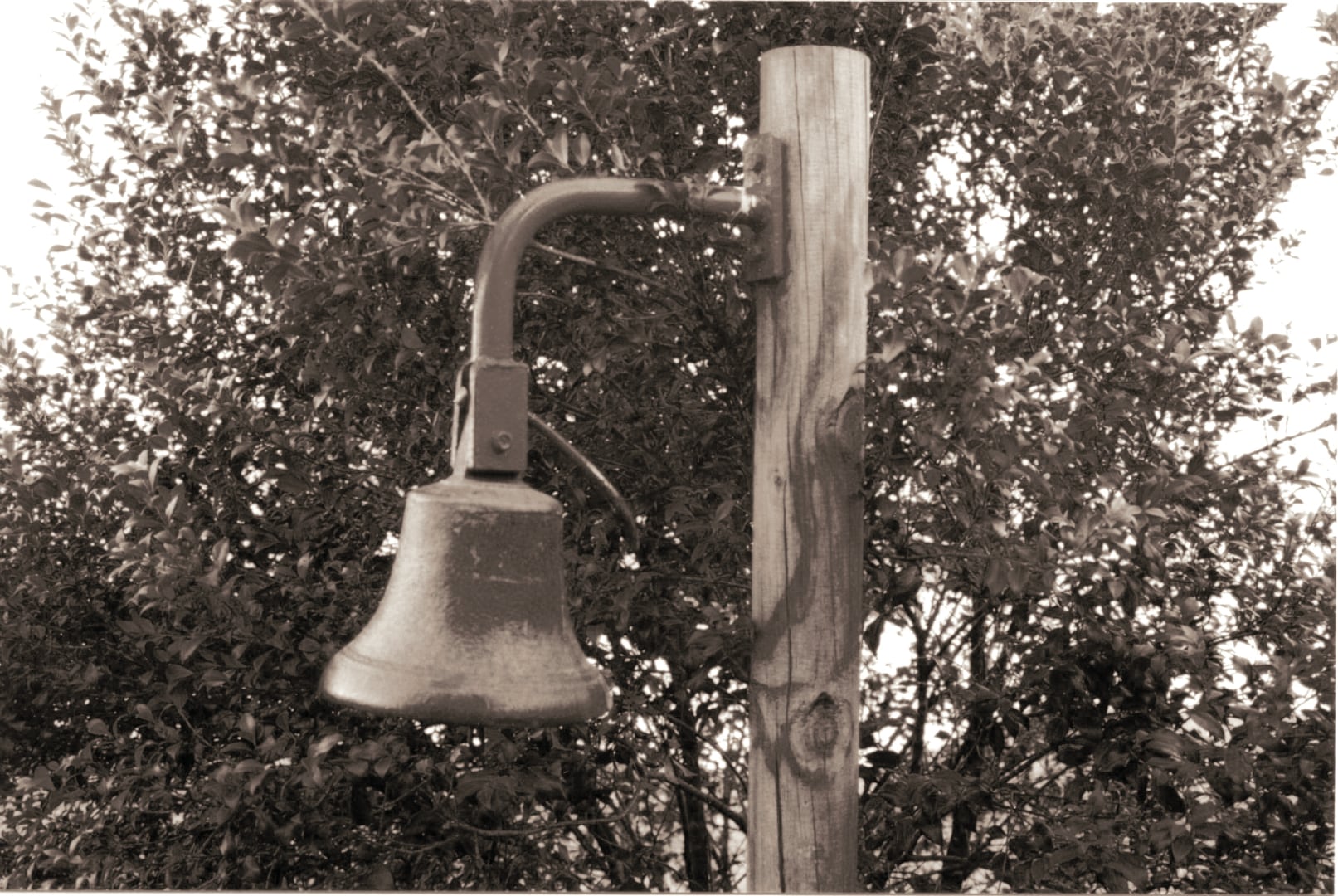Family and Church: A Catholic Settlement
The story of the New Italy pioneers is one of hope and tragedy, heartache and joy, centred on their commitment to Family and Church.
Towards A Promised Land
The Italians who joined the Marquis de Rays’ ill-fated expedition in July 1880 were all Roman Catholic. the Marquis had sought Catholic funding for his venture and targeted rural Catholic poor as the new settlers in East New Guinea.
Embarking Under The Will of God
A priest was assigned to accompany the voyage. These actions were taken as a sign of God’s will, despite the church declining to sanction such a reckless scheme. Following their three months of horror in the tropics, the survivors had to leave the marble altar stone behind as they battled towards Noumea in their leaking ship. Adding insult to the failure of the expedition, the Samoan – American trader Queen Emma’ incorporated the marble into a bar at her home.
At the Centre of Community: The Church at New Italy
Two years on, the dream of building a new settlement away from the poverty and politics of Northern Italy began to emerge here, in northern New South Wales. As more families gathered at New Italy and took up properties, Antonio Nardi donated land for the first church in 1887. It was constructed from local materials and built by the settlers. The church was centrally located within the sprawling community of isolated farms, neighbouring the hall and wine shop.
Either Abbe Felix Schurr or Reverend Father Fagan initially conducted Sunday Mass on a monthly rotation. Father Cornelius Callanan took up the route from 1900. The Lismore Bishops, Doyle and later Carroll, also visited for special occasions such as confirmations.
Regardless of whether a priest was available, the settlers gathered every Sunday afternoon at the Church to sing hymns and say the Rosary. This was time for the weekly social gathering, where church was followed by red wine, cards and song for the men, catching up among the women, and games for the children. In the late 1800s, this more robust Sunday communal culture of the rural catholic Italians contrasted with the quiet day of reflection of neighbouring Anglo Celtic Christians.
In February 1907 the original church building, depicted in this early illustration,was blown over in a storm. A fundraising campaign was quickly established under the energetic guidance of the Bazzo family, much lauded by the local press and clergy at the time.
Two months later the foundation stone for the new church was laid and building commenced with contract labour. The formal opening of the new St. Peter’s Roman Catholic Church was held on Sunday 23 June 1907.
Fiorina Teresa Spinaze née Bazzo on her wedding day.
Weekend Sunday School classes were conducted at New Italy by Fiorina Bazzo. She encapsulates the story of tragedy and joy of the pioneers.
Born 26 January 1881 to Antonio and Teresa Bazzo, amidst the chaos and death of Port Breton, Fiorina was baptised on arrival in Noumea. She was raised in a new land that offered hope and eventual prosperity.
Antonio Spinaze and Fiorina married in St. Peter’s Church and later moved to better farming land north of Lismore, where they raised seven children. When she died in 1948 the congregation at the St. Carthage’s Cathedral was reported to be ‘one of the largest seen at a funeral service in Lismore in recent years. Residents of many parts of the Lower and Mid-Richmond districts were present’.
Gone but not forgotten
As time passed, people moved away from the settlement. St. Peter’s Church was destroyed by a cyclone in 1945.
Precious surviving items include the church bell that now resides at St. Joseph’s Primary School in Woodburn and the crucifix (as seen above) at St. John’s Catholic Church, Evans Head.
The Park of Peace here at the museum contains a monument to Father Miazzi, a much loved Scalabrinian priest from the North Lismore Parish.
The Mid-Richmond region is now a multicultural blend that includes Italian heritage across its family groupings, with the memories of family and church embedded in the landscape.
<< (17) Community Wall
>> (19) New Italy’s ANZACS Honour Roll


